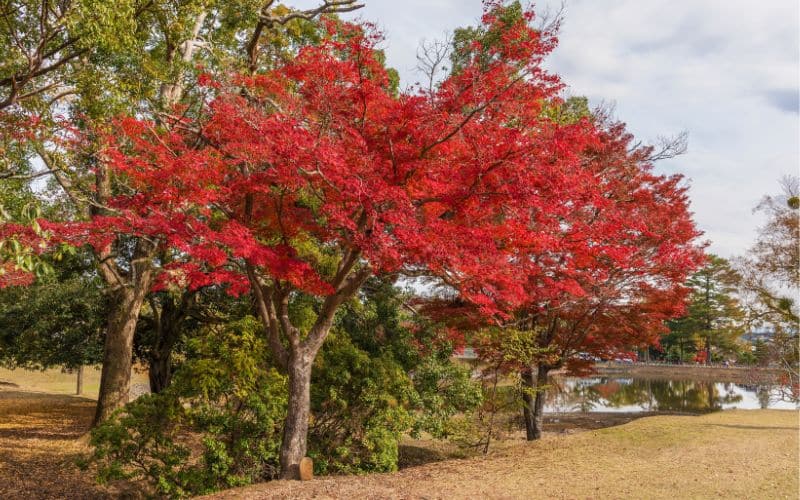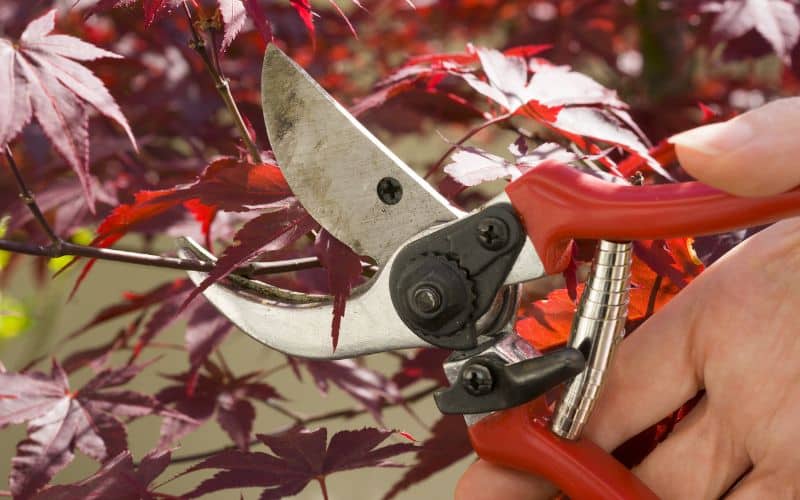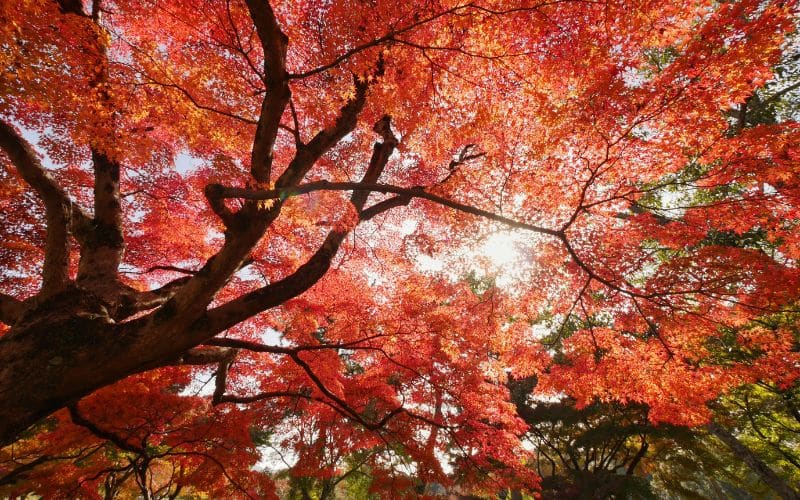
The Allure of the Red Maple Tree in Ontario
The red maple! It’s a name that conjures images of fiery autumn foliage and sturdy, resilient wood. But what makes this particular maple tree so special, especially in the heart of Ontario? Let’s dig in and find out.
What Makes the Red Maple Tree an Ontario Native?
The red maple, or Acer rubrum as it’s scientifically known, is a native species to Ontario. This tree has adapted to a variety of soil types, from acidic to neutral, and it’s this adaptability that has made it a staple in Ontario’s diverse ecosystems.
The Distinctive Features of Acer Rubrum: More Than Just a Maple Tree
When you think of a maple, the first thing that comes to mind might be the iconic leaf shape. But the red maple offers more than just aesthetic appeal. Its leaves are light green on top and paler underneath, turning into a brilliant red in the fall. The bark of the red maple is smooth when young but becomes ridged as the tree matures.
Where Can You Find Red Maple Trees in Ontario?
You don’t have to go far to spot a red maple in Ontario. These trees are commonly found in both urban and rural landscapes, often near water sources. Their ability to thrive in moist to moderately dry conditions makes them a versatile addition to any setting.

How Does the Red Maple Contribute to Ontario’s Landscape?
When it comes to shaping Ontario’s natural scenery, the red maple is a quiet yet impactful contributor. Its root system, though shallow, spreads wide across the ground, acting like nature’s own erosion control mechanism. This is particularly beneficial in areas prone to soil degradation or water runoff.
But the red maple doesn’t stop at soil conservation. Its lush canopy offers generous shade, creating microclimates that can support a variety of other plant species. This makes the red maple not just a standalone beauty but a team player in both urban parks and expansive rural landscapes. Whether it’s offering a cool respite on a hot summer day or acting as a natural windbreak, the red maple proves its worth as a multifaceted asset in Ontario’s diverse environments.
Is Maple Syrup a Possibility with the Red Maple?
Maple syrup—the liquid gold that has sweetened many a pancake and waffle. While the sugar maple often steals the spotlight in the syrup game, let’s not overlook its close cousin, the red maple. Yes, you heard that right; the red maple can also be tapped for its sap.
Now, before you grab your tapping kit, there’s something you should know. The sap from the red maple does have a lower sugar content compared to the sugar maple. This means you’ll need to boil down more sap to get that syrupy goodness. But don’t let that deter you; the end result is a unique, slightly less sweet syrup that offers its own distinct flavor profile. It’s like the indie version of maple syrup—less mainstream but equally delightful.

How to Prune Your Red Maple for Optimal Health
Think of pruning your red maple as giving it a spa day. It’s not just about cutting away the old; it’s about encouraging the new. And timing is everything. The ideal window for this tree-care ritual is late winter to early spring, when the red maple is in its dormant phase.
Why this specific time, you ask? Well, pruning during dormancy minimizes stress on the tree and reduces the risk of disease transmission. It’s also the perfect opportunity to assess which branches have seen better days. Whether they’re dead, diseased, or just growing in the wrong direction, removing these branches allows the tree to focus its energy on new growth.
Common Pests and How to Protect Your Red Maple
Even the robust red maple isn’t immune to the occasional pest problem. Aphids and scale insects are the usual suspects, but don’t worry, they’re more of a nuisance than a death sentence for your tree. The key to a healthy red maple is vigilance. Make it a habit to inspect the leaves and bark for any signs of these tiny invaders. If you spot them, a targeted treatment with insecticides or natural remedies can usually nip the problem in the bud. By keeping a watchful eye and acting promptly, you can ensure that your red maple remains the picture of health.
What Are the Best Planting Tips for a Red Maple in Ontario?
So you’ve decided to make the red maple the newest addition to your outdoor space—excellent choice! Now, let’s talk planting strategy. First off, location is crucial. While these trees are quite forgiving and can tolerate some shade, they truly flourish in full sun. As for the soil, aim for something well-drained and moist. A slightly acidic soil pH will make your red maple feel right at home.
Before you dig that hole, consider the tree’s mature size to ensure it has enough room to spread its roots and branches. Once planted, give it a good watering to settle the soil and eliminate air pockets. With the right conditions and a little TLC, your red maple will be a thriving, vibrant part of your landscape for years to come.

Why Is the Red Maple a Popular Choice for Landscaping?
The red maple’s adaptability to various soil types and moisture levels makes it a popular choice for landscaping projects. Its vibrant fall foliage adds a splash of color, and its sturdy wood is often used in furniture and flooring, making it both beautiful and functional.
Conclusion: The Lasting Impact of the Red Maple on Ontario’s Ecosystem
The red maple is more than just a pretty face; it’s a vital part of Ontario’s ecosystem. Its adaptability to different soil types, resistance to pests, and contribution to the landscape make it a tree worth celebrating. Whether you’re a homeowner looking to add a splash of color to your yard or a conservationist keen on preserving native species, the red maple is a tree that delivers on all fronts.
So the next time you’re out and about, take a moment to appreciate the red maple trees around you. They’re not just another maple; they’re a testament to the beauty and resilience of Ontario’s natural world.








